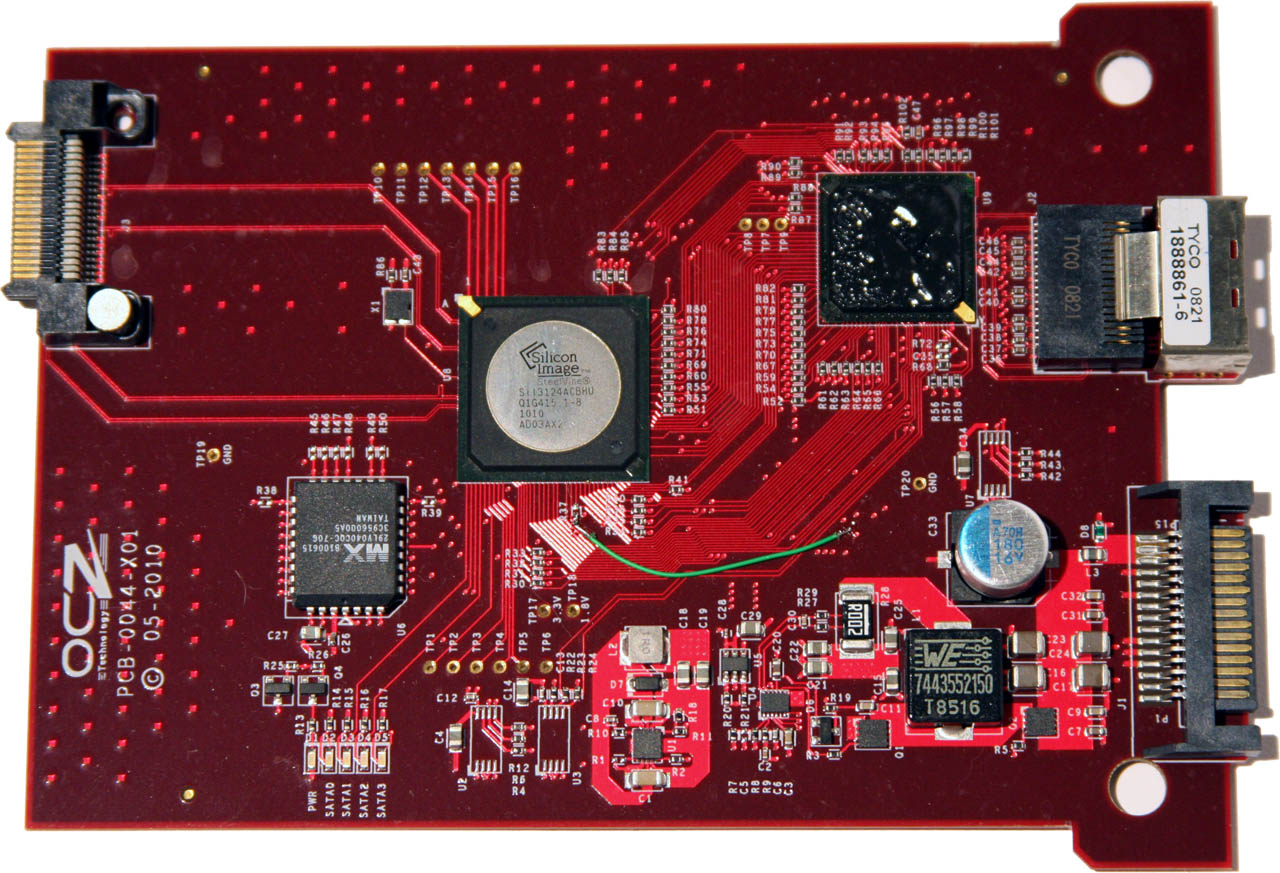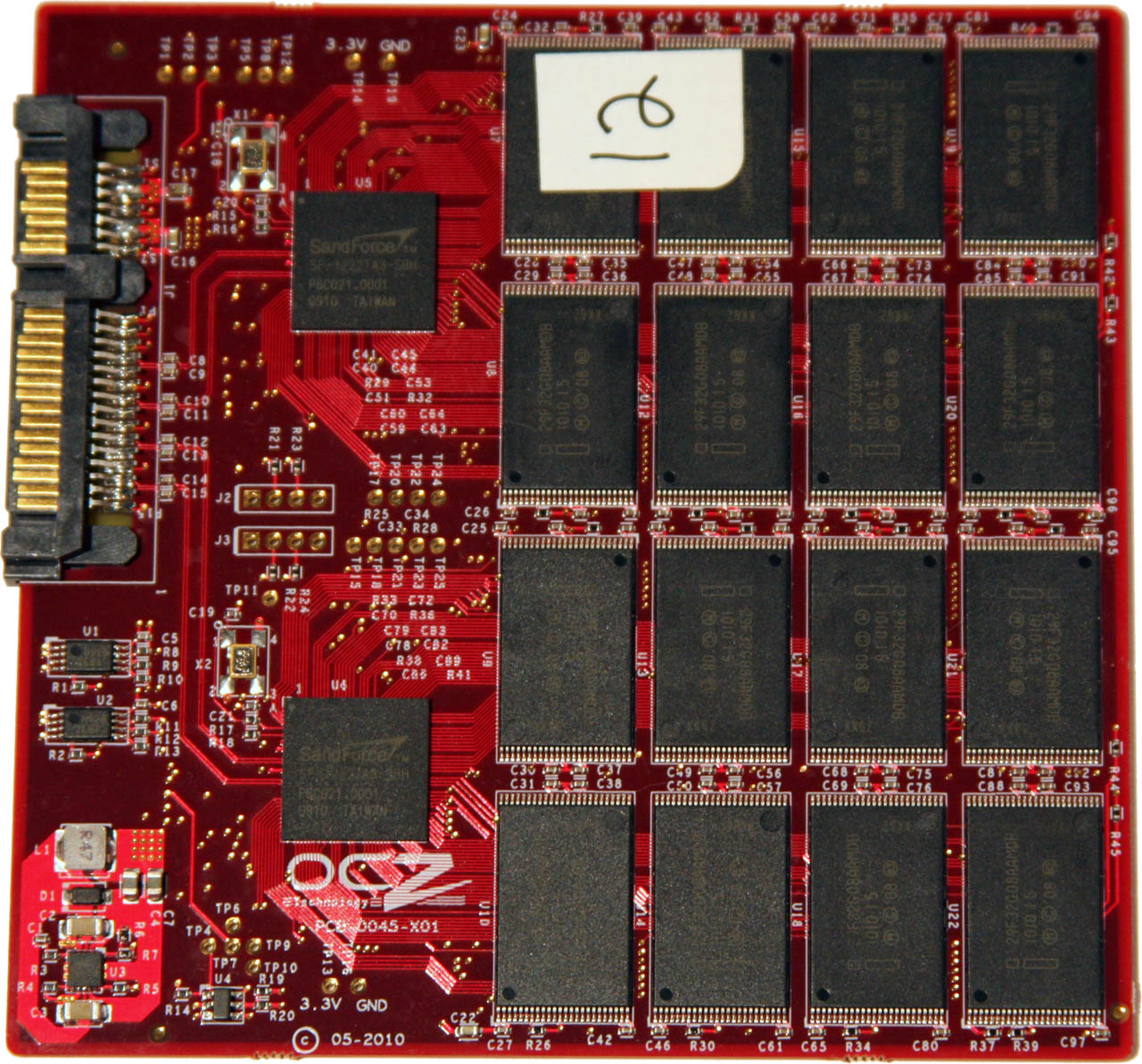OCZ's HSDL: A New Storage Link For Super-Fast SSDs
SATA 6Gb/s not fast enough? OCZ's new High-Speed Data Link serves up to 2 GB/s through a PCIe-like connection. Complementing the interface technology is a similarly-new 3.5" SSD called IBIS. Rated for up to 120,000 IOPS, enthusiasts should take note.
The HSDL/IBIS One-Two Punch
SATA 3 Gb/s treated us well for a very long time. Even today, mechanical hard drives simply cannot push enough data to saturate a 3 Gb/s link. Shoot—most SSDs can’t saturate a 3 Gb/s link, either. And now we have 6 Gb/s connectivity being included on AMD’s SB850 southbridge. In the next couple of months, it'll also surface on Intel’s P67 chipset. On the desktop, though, these fast storage interfaces just aren't super-exciting.
In the enterprise world, 6 Gb/s signaling is already being exploited. The faster transfer link between a compatible RAID controller and midplane means you can attach twice as many drives to each port before running out of headroom. It’s a simple matter of math, really. If one 6 Gb/s link is capable of up to 600 MB/s, assume you can attach three or four disks to an expander and not see a performance bottleneck, even if they’re all running full-out. In the days of 3 Gb/s connectivity, it would have been possible to force a limitation much sooner.
Of course, the desktop market isn’t really accustomed to seeing SAS expanders or SATA port multipliers. In the world of the enthusiast, you’re usually looking at one device per port. And at 6 Gb/s, we’re now a long ways away from seeing a single drive saturate a single link.
Why, then, is OCZ announcing its own interface, labeled as the answer to current interconnect limitations? That’s the exact question I posed to Ryan Petersen, the company’s CEO.
OCZ Announces Its High Speed Data Link
New technologies generally don’t gun for the mainstream. Rather, they shoot for the top and derive their way down into more affordable versions that enthusiasts with car payments and mortgages can justify. Such is the case here. A high-speed link suggests the need for more sequential and random I/O throughput than what’s available today through SAS. And so Ryan says he’s going for the ultra-high-performance market—anything from supercomputing to bandwidth-starved (and presumably fairly wealthy) power users.
To a degree, anyone in the range of flush enthusiasts to Oracle database administrators probably doesn’t care what bleeding-edge storage technology costs. The thing is, OCZ isn’t trying to translate its High-Speed Data Link into some new class of inaccessibly-expensive storage products. In fact, a first-glance at the company’s new SSDs based on HSDL shows a handful of price points that actually make sense.
Get Tom's Hardware's best news and in-depth reviews, straight to your inbox.
| Part Number / Capacity | MSRP |
|---|---|
| OCZ3HSD1IBS1-960G | $2799 |
| OCZ3HSD1IBS1-720G | $2149 |
| OCZ3HSD1IBS1-480G | $1299 |
| OCZ3HSD1IBS1-360G | $1099 |
| OCZ3HSD1IBS1-240G | $739 |
| OCZ3HSD1IBS1-160G | $629 |
| OCZ3HSD1IBS1-100G | $529 |
Alright, so $530 for 100 GB of storage space is a little ridiculous. But you’d expect to pay $800 for 320 GB of X25-Ms in RAID 0, so $1100 for a 360 GB IBIS drive isn’t outside the realm of reason if the performance is right. And if you were specifically shopping for something that could keep up with HSDL from the SAS world, you’d need a RAID controller, which would drive up cost. OCZ bundles each of these drives with the controller card needed to make an HSDL connection.
Interestingly, the IBIS drives are more expensive than OCZ’s recently-released PCI Express-based RevoDrive. The company’s official stance is that the RevoDrive is aimed at optimized price/performance, appealing to enthusiasts. The IBIS is better suited to workstations and the HPC market. Backing these projections are OCZ’s initial performance numbers. The company is claiming read and write speeds of up to 740 MB/s, and up to 120,000 IOPS. Those figures are insane. Clearly, they’re also in excess of what a single SAS or SATA interface could accommodate. And according to OCZ, this is only the first generation of the technology—it’s supposed to get faster from here.
Intrigued? I was too. Let’s look at the HSDL interface itself for more on what it purportedly offers.
-
Randomacts *faints* I will never be able to afford these.Reply
Those HDDs cost more then my entire comptuer -
randomizer Chris I think I'll need to double-check your results. Better send the drive my way.Reply -
mianmian Optic link technology may be more exciting. Can't wait to see lightpeak or similar stuffs to become real.Reply -
First time saw those numbers, i gasped for air... OCZ, can you try to saturated with PCIe 2.0 x16 bandwidth? And can anyone tell me how much is it in Write and Read speeds at that bandwith?Reply
-
wribbs Very nice to see secondary storage tech at orders of magnitude beyond what we're used to. Can't wait for this type of tech to become mainstream.Reply -
compton Stuff like this makes me wish I was involved in an enterprise-class technology environment that could actually benefit from 130,000 IOPS in a package like this. I guess I don't need to ditch my Agility 60, but I like where OCZ is headed.Reply -
h8signingin Yet there are already drives that outperform these by a large margin available for a while now, like this:Reply
http://www.superbiiz.com/detail.php?name=RGS0256M&title=Super-Talent-RAIDDrive-GS-256GB-RAID0-PCI-Express-x8-Solid-State-Drive
Read 1.4GB/s, Write 1.2GB/s
At those speeds, it's like writing to RAM, only it's your hard drive.
There were also capacities up to 1TB that cost about $4,000. There were even SLC models (which cost 4x more, approx. $15,000) which are slightly faster still.
Personally, I wouldn't mind having 1TB of "slow" RAM as my hard drive, but it's just beyond my budget. -
cangelini h8signinginYet there are already drives that outperform these by a large margin available for a while now, like this:http://www.superbiiz.com/detail.ph tate-DriveRead 1.4GB/s, Write 1.2GB/sAt those speeds, it's like writing to RAM, only it's your hard drive.There were also capacities up to 1TB that cost about $4,000. There were even SLC models (which cost 4x more, approx. $15,000) which are slightly faster still.Personally, I wouldn't mind having 1TB of "slow" RAM as my hard drive, but it's just beyond my budget.Reply
Yup, check it out! =)
http://www.tomshardware.com/reviews/super-talent-raiddrive,2513.html


